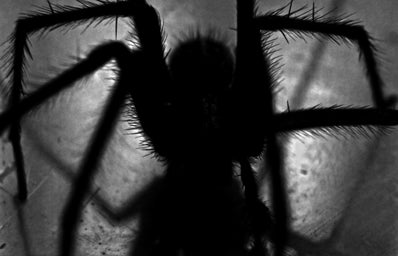Halloween is one of those holidays—at least for me—that has always held a special place in my heart. I love Halloween and everything that goes along with it—spooky movies, pumpkin patches, haunted houses, carving pumpkins and everything in between. When I was a kid, trick-or-treating and dressing up was my favorite thing. I always have loved the spirit of Halloween, but I had never really thought about the history of the holiday until I was compelled to do some research recently. The history of Halloween is fascinating, so grab your popcorn and get ready to learn about the fascinating and spooky history behind the holiday we know as Halloween!
Source: Pinterest
The story of Halloween began almost 2,000 years ago with the Celtic people who lived in what is now Ireland, the UK, and France. The Celts celebrated their new year on November 1st with the ancient festival of Samhain. For the Celtic people, November 1st marked the end of summer and the harvest and the beginning of winter which was often associated with human death.
The Celts believed that on the night before their new year, October 31st, the veil between the living and the dead became thinner and more blurred. It was on this night when they celebrated Samhain, the Celts believed that the ghosts of the deceased returned back to earth. They believed that these ghosts caused trouble and damaged their crops, but they also thought that the presence of these ghosts made it easier for Celtic priests—otherwise known as Druids—to predict the future. These predictions were extremely important to the Celtic people because they provided comfort and direction during the dark winter.
Source: Unsplash
To celebrate Samhain, the Druids had sacrificial bonfires where the Celtic people came together to burn crops and animals to sacrifice to the Celtic gods. During Samhain, the Celtic people wore costumes made of animal skin and told each other’s fortunes. The ancient Celtic people celebrated four quarterly fire festivals, and they marked Samhain as the most significant, as it took place during the middle of the fall equinox and the winter solstice. Early Celtic texts mention that Samhain was a mandatory celebration that lasted three days and three nights. If you did not participate, the Celtic people believed that you were punished by the gods, which usually resulted in illness or even death.
Now, Halloween isn’t all about the Celtic people—the Romans are involved in the history of this holiday as well! By 43 AD, the Roman Empire conquered the majority of the Celtic territory. Within the 400 years that the Romans ruled over this territory, two Roman festivals were combined with the Samhain celebration. The first of these celebrations was called Feralia, which was a day in the latter part of October when the Roman people celebrated the passing of their loved ones. The second celebration was in honor of the Roman goddess of fruit and trees, Pomona. The main symbol of Pomona is the apple, which is the probable explanation for the tradition of bobbing for apples that is still celebrated on Halloween.
Source: Journeying to the Goddess
On May 13, 609 AD, the Catholic feasting holiday of All Martyrs Day was established by Pope Boniface IV who dedicated the Pantheon to honor all Christian martyrs. From then on, All Martyrs Day became an establishment in the Western church. Later, Pope Gregory III expanded the festival of All Martyrs Day to include all saints and moved the day of observance to November 1st. By the time the 9th century came around, Christianity had spread to the original Celtic lands and eventually blended with older Celtic traditions. In 1000 AD, the Catholic church created All Souls’ Day to be celebrated on November 2nd as a day to honor the dead. It is largely assumed that All Souls’ Day was meant to replace Samhain with a church-sanctioned holiday. All Saints Day was also called All-Hallows or All-Hallomas, which comes from the Middle English “Alholowmesse.” The night before All Saints Day (October 31st) began to be called All-Hallows Eve, which eventually turned into Halloween.
Source: The Ancient Web
At this point, you’re probably wondering how the tradition of celebrating came to America. At first, the celebration of Halloween was very limited in the original colonies in what is now New England because of the presence of the Protestant religion. Celebrating Halloween was much more common in the southern colonies, such as Maryland. The beliefs and traditions of Europeans and Native Americans started to enmesh, which lead to a distinctly “American” version of Halloween. The early Halloween celebrations included “play parties,” which were public events that were held to celebrate the harvest. People would share stories of their deceased friends and family, tell each other’s fortunes and just generally engage in merriment. These celebrations also included ghost stories and making mischief.
By the mid-1800s, these celebrations were fairly common but were not being celebrated across the country. In the second half of the 19th century, America saw a new wave of immigrants, particularly from Ireland. These Irish immigrants were escaping the infamous Irish Potato Famine, and their arrival in America helped to popularize the celebration of Halloween across the country.
Source: Unsplash
Hopefully, now you know a little more about the history of Halloween and where its roots lie. The spooky holiday started at a very different place than where it is today. I want to give a big thanks to the History Channel for inspiring this article and go check out this article if you want to know more about the spooky history of Halloween! Let me know what your favorite Halloween tradition is on Instagram (@shelbylavery)! Happy Halloween everyone! ??



